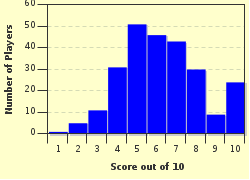Quiz Answer Key and Fun Facts
1. Oral hygiene involving a form of toothpaste dates back to what two countries circa 3000-5000 BC?
2. In the 1st century AD, which of the following methods was NOT used to prevent toothaches?
3. The world's oldest known recipe for toothpaste was discovered on a dusty papyrus in the basement of a Viennese museum. This 4th century document described what the author called a "powder for white and perfect teeth". The ingredients included rock salt, pepper, mint, and iris flowers. From which great empire did this papyrus originate?
4. Many early toothpaste formulae were based on urine.
5. The first record of actual toothpaste is in 1780 and included the practice of scrubbing one's teeth with a toothpaste formula that included which of the following?
6. Most toothpastes in the 19th century came in what form?
7. In 1855, what prognosticating publication offered the following toothpaste recipe: 1 oz myrrh (powder), 2 spoonfuls honey, and a pinch of green sage?
8. Toothpaste was first marketed commercially in the late 19th century. The initial offering, Dr. Sheffield's Creme Dentifrice, came in what kind of original container?
9. In 1914, what compound was first added to toothpaste to fight cavities and tooth decay?
10. Complete this slogan: You'll wonder where the yellow went when you brush your teeth with _____________.
Source: Author
Becher
This quiz was reviewed by FunTrivia editor
Nannanut before going online.
Any errors found in FunTrivia content are routinely corrected through our feedback system.


